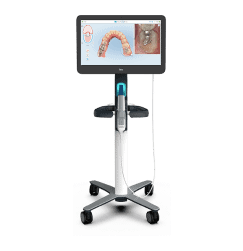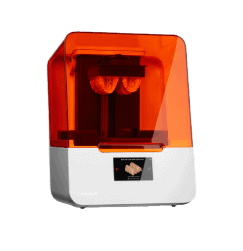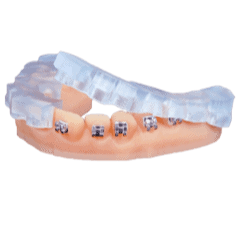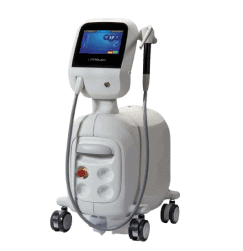iTero Digital Impressions
Say Goodbye To Traditional Impressions
In the old days, in order to plan a patient’s orthodontic treatment and to prepare their invisible aligner trays or clear retainers, we had to take a physical impression of the patient’s smile — and it wasn’t a particularly pleasant experience. Thanks to modern technology, we can now get all the information we need to plan your orthodontic treatment with a quick scan of the inside of your mouth, with no messy impressions required!
Digital impressions use cutting-edge laser and scanning technology to create a digital 3D replica of the inside of the patient’s mouth. The entire process only takes minutes, and the digital impressions eliminate some of the errors that come up with traditional impressions. Digital impressions provide much more accurate images of the teeth that enable our team to zoom in for a more careful evaluation and more accurate treatment plans.
3D Printing
In conjunction with the iTero Scanner, 3D printing technology allows us to print clear aligners and clear retainers right here in-office. Our team utilizes specialized printing technology that works directly with scanned models to create appliances that are custom-fitted for each patient’s mouth.
The in-office access to printing technology allows us to make any necessary adjustments without lengthy waiting periods. For example, if a patient loses or damages a retainer, our team can print replacements quickly and easily.
Cone Beam CT Scans
Cone Beam Computed Tomography (CBCT), is a form of 2D and 3D digital imaging that goes above and beyond standard X-rays. During your scan, a cone-shaped beam will be moved around you to take images of your teeth, bones, soft tissues, and nerve pathways that are then put together to create a panoramic model. Having such a detailed layout of your smile, bite, and overall oral health allows our team of orthodontists to customize a treatment plan that is perfectly tailored to your orthodontic needs.
Indirect Bonding
To keep the process of getting braces as seamless as possible, we have introduced the technique of indirect bonding. This process allows us to ensure the most accurate placement of brackets. Using a scan of your smile, we create an exact model of your teeth that your orthodontist uses to position each bracket precisely where it should go on each tooth. For the final step, we create a custom tray that allows us to transfer the brackets from the lab model to your teeth. Once this custom tray is finished, we will have you back into the office to ensure the proper fit of the tray and attach your braces. While traditional bracket placement takes around 40-60 minutes, the process with indirect bonding only takes around 15-25 minutes, so we’ll have you in and out smiling in no time!
Laser Therapy
Laser treatment provides several benefits for patients receiving orthodontic care. By using a specialized diode laser, our orthodontists are able to safely and effectively sculpt the gums around the teeth to remove excess gum tissue and expose more of the tooth’s surface for better aesthetics and function. The best part of laser therapy? In most cases, we simply apply a topical anesthetic to the gum tissue being treated so all you feel is the slight movement of the laser tip. Laser therapy is often used for:
- Ideal Bracket Placement – If your gums have not receded properly, or if a tooth is erupting slower than expected, a laser can be used to remove excess tissue and reveal enough tooth surface to place a bracket.
- Impacted Teeth – By using laser treatment, we can assist with a tooth’s eruption without the need to wait months for the tooth to erupt on its own, or to refer to an expensive surgical procedure.
- Aesthetic Gingival Recontouring – Following the removal of your braces, your orthodontist may recommend recontouring your gum line to produce a more symmetrical, balanced smile by exposing more of your teeth.
Digital X-Rays
Dental x-rays, also known as panoramic radiographs, are 2-dimension images of your teeth, jaw, and bones, which give your orthodontist a complete picture of your smile alignment. Film x-rays have been used in dentistry for decades and required printing the x-rays onto plastic sheets, but digital x-rays have revolutionized radiography and allow for instant imaging so your orthodontist can immediately assess your dental structure and make a treatment plan with complete information about your smile.





